Revisiting Recovery Techniques for MOB
Published on September 9th, 2019
For more than 35 years, Practical Sailor has been taking the guesswork out of boat and gear buying with bold, independent boat tests, and product-test reports for serious sailors and boaters. In this report, they revisit MOB recovery techniques:
Ocean sailing in a modern race boat or multihull with a high horsepower rig makes double-digit boat speed attainable and complicates a man overboard (MOB) rescue. Our research suggests that no single MOB tactic works for all occasions.
The higher speeds attainable by modern boats is one of the most compelling arguments for re-examining overboard practices. If a crew goes over the side at double-digit speed and is not tethered to the boat, it becomes a guaranteed “adios” encounter. How far you leave the person in the water behind depends upon how long it takes to slow the boat, cope with a spinnaker douse, and get things turned around.
To continue to sail away at the start of a rescue seems counter-intuitive, however, abrupt maneuvering can result in spin outs, knockdowns, and create a chance for boat damage and more people in the water—further lessening the chance of a good outcome.
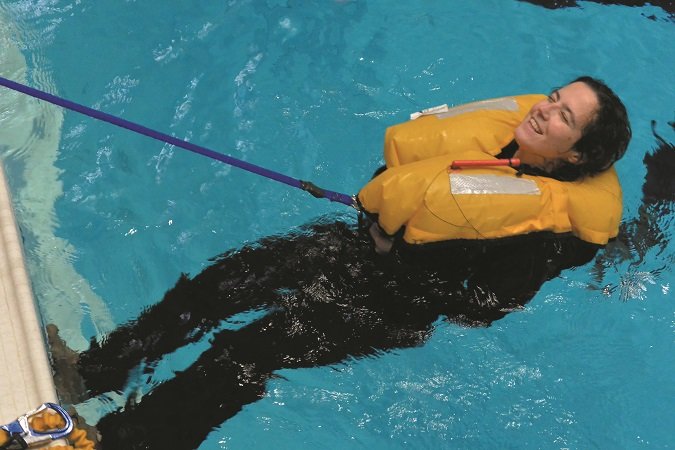
Even with a tethered victim, lifting them aboard presents several challenges. As pool practice sessions revealed, it is possible for the victim to slip out of a loose harness.
At the cry of “man overboard!” rescue gear is immediately jettisoned, a lookout is assigned, buttons pushed, radio calls made, and all hands rally on deck with three things in mind: get the boat slowed down, reduce sail, and head back to the victim.
Spinnakers present special difficulties, and one approach worth trying is the controlled “letterbox” method of dropping a spinnaker. This involves hauling the chute through the slot between the mainsail foot and the boom (loose footed main only).
This dousing technique leads and flattens out the sail, sending it directly below through the main hatch. With the spinnaker down, the main centerlined, and all lines out of the water, the engine is started and the vessel is headed on a reciprocal course back toward the victim.
The crew uses every position-finding asset available to augment the search for the person in the water. These include AIS beacon, GPS MOB position, VHF voice/DSC, FLIR scope, the victim’s visual light, (7×50) binos, whistle, and mirror. When sighted, an approach plan is used that sets up the vessel so contact is made just as the boat loses way and is in a nearly head to wind position.
Bridging the gap, making contact, and securing the victim to the vessel is crucial. But tall-rigged, light-displacement vessels don’t like to slow down and holding them on station is difficult. This means that the window of opportunity to connect the victim to the vessel closes quickly.
Having multiple crew ready with throw lines can be a big plus, as is the deployment of a Lifesling, just in case the final approach is a little too fast. The big debate is whether or not to use a rescue swimmer.
On one hand, putting more people in the water can elevate rather than mitigate risk. But if a trained lifesaver is aboard, especially if they have had actual ocean surf rescue experience, the risk may be justifiable.
Often the person in the water is fatigued, hypothermic, and panicked enough to have trouble doing their share in the rescue. If a rescue swimmer is used, they should be tethered to the boat, meaning there’s another loose line in the water. But if that’s what it takes to get a victim securely attached to the boat and ready to be hoisted, it may be worth putting a rescue swimmer to work.
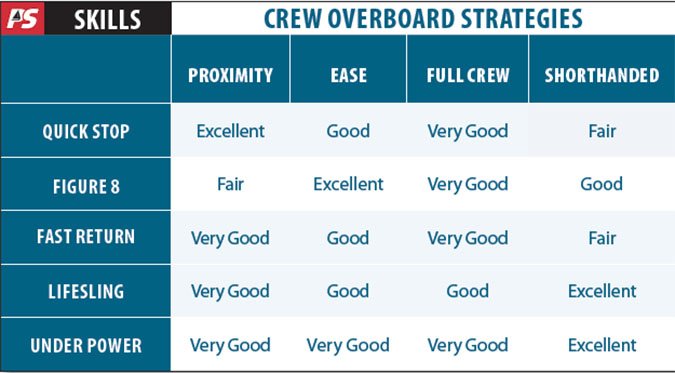
None of the tested maneuvers are ideal for all circumstances. On a fully-crewed raceboat, the Quick Stop can be very effective, but for shorthanded cruisers, motoring back to the victim might well be the best choice. Some maneuvers will work better for certain boats, or certain circumstances. For more detailed descriptions of each recovery routine, see the text and illustrations on the adjacent page.




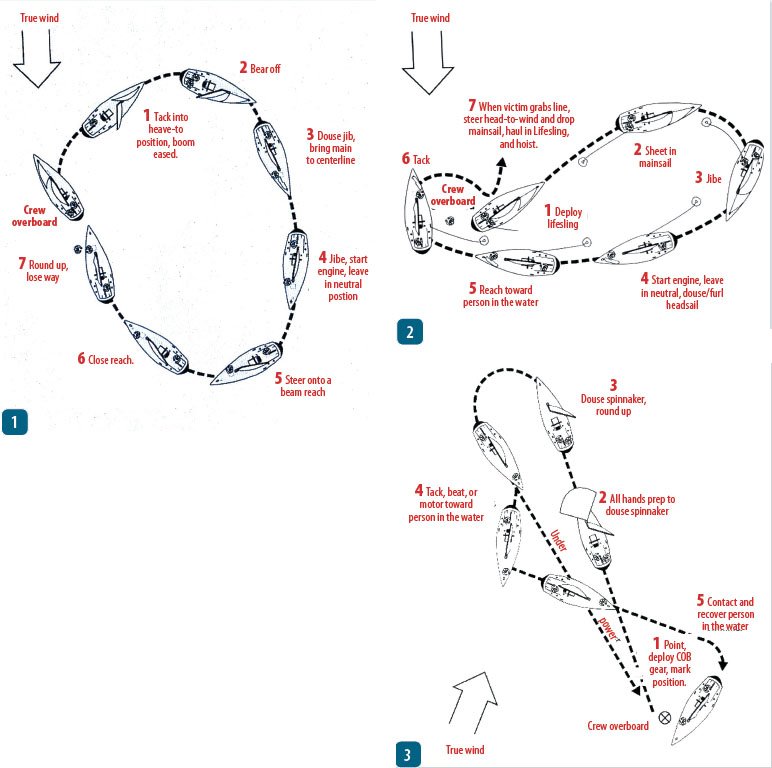

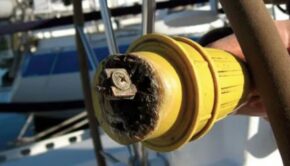

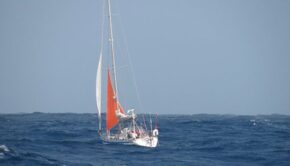
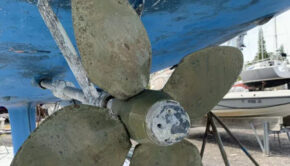
 We’ll keep your information safe.
We’ll keep your information safe.